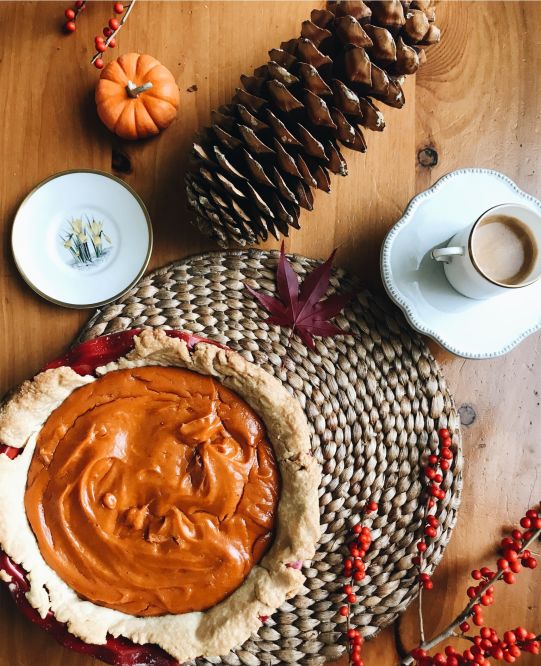The holidays are hot on our heels and we know many of you are thinking about attempting homemade pie crust. For some of you it will be your first time and we know there is a lot of anxiety associated with making your first pie crust. Here’s some tips and tricks to get you rolling!
Easy Double Pie Crust Recipe
In four seasons of podcasting, we’ve baked a lot of pies and tried a lot of pie crust recipes. Andrea’s friend Mary Beth contributed her special recipe and it’s hands down the easiest and least intimidating way to get started. This recipe doesn’t require chilling before rolling, it can be made in a bowl or in a food processor, and, most importantly, it doesn’t have that vague “Add 4 – 10 tablespoons of water” instruction. Beginning pie makers often struggle with “How much water is enough?” and this recipe completely eliminates the guesswork.
Mary Beth’s Reliable Pie Crust Recipe
Can you Make Flaky Pie Crust with Butter or Shortening?
When Andrea attended Pie Camp with Art of the Pie author Kate McDermott, she learned that butter adds the yummy flavoring to pie crust, while leaf lard contributes to the flakiness. Leaf lard can be hard to find so shortening can be used as a substitute. Which means you could make a pie with any combo that works for you! If you use Mary Beth’s Reliable Pie Crust recipe, you can use any of the following for the ‘fat’ component of your double crust recipe:
- 2 sticks of butter
- 1 stick of butter and 8 Tablespoons of shortening
- 1 stick of butter and 8 Tablespoons of leaf lard
Shaping and Crimping Pie Crust Edges
While there are many beautiful and fancy Pinterest-inspired pies out there, we think a rustic pie with hand shaped edges indicates a homemade pie made with love. After rolling out your crust and placing it in your pan, trim the edge (with kitchen scissors or a knife) so there’s about an inch hanging over the edge. Now fold the crust up over the edge, and press down to seal. Some easy ways to make your edges pretty:
- Press the tines of a fork all around the edge
- Press pie weights around the edge
- Use a pie plate with a wide edge!
- Use a crumble topping for pies so you don’t have to worry about how the top looks.
We can’t wait to see your pies! Below is a picture of a Sweet Potato Pie Andrea made for Episode 101. You’ll notice the edges fell apart a bit…and guess what? It didn’t matter. The pie was still delicious.
